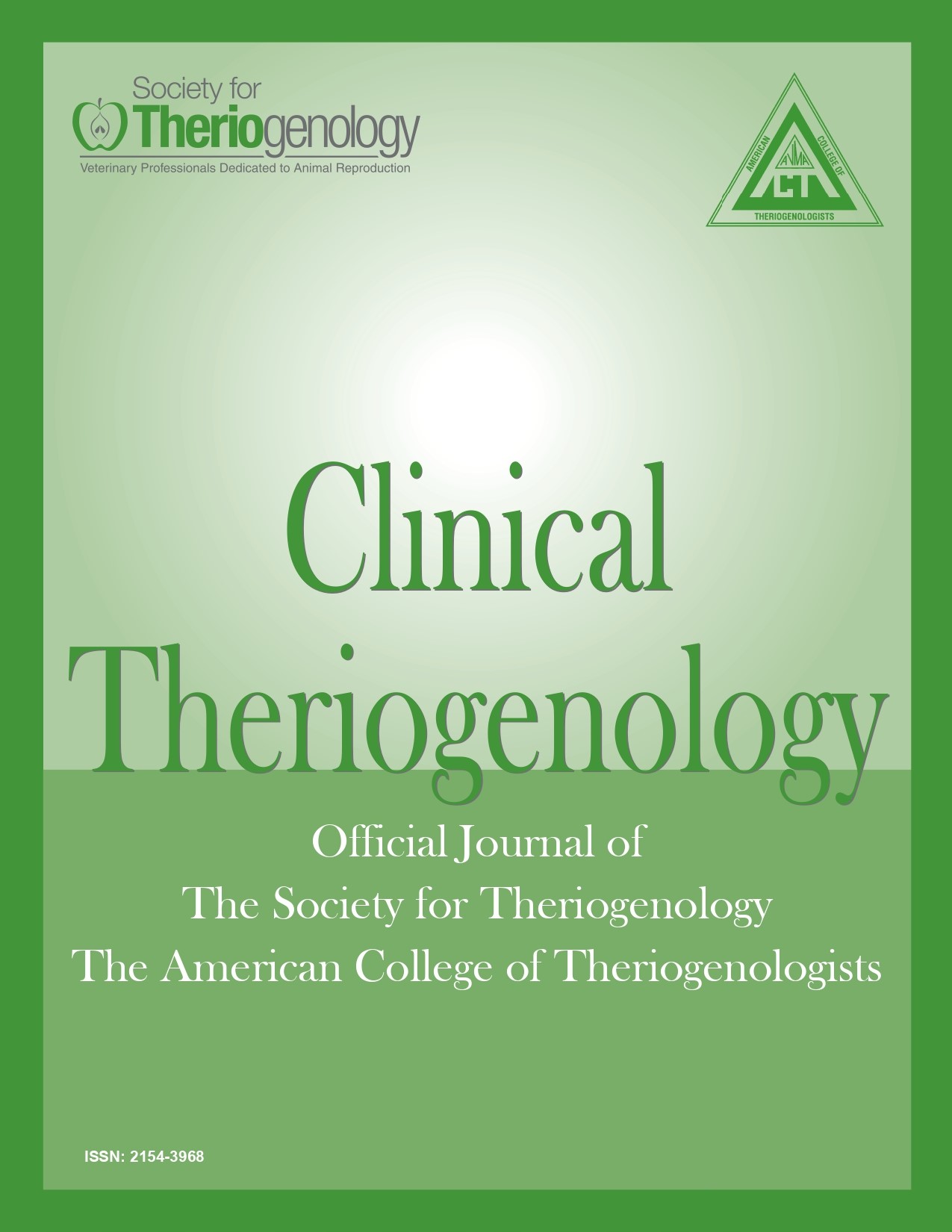Luteinizing hormone receptor expression in canine t-lymphoma cell lines
Abstract
Introduction Canine lymphoma is a common malignant tumor in dogs. Luteinizing hormone receptors (LHR) have been found in normal and neoplastic canine lymphatic tissue.1 The LHRs have also been found in human leukemia cell lines.2 Therefore, we hypothesized that LHR would also be present in canine lymphoma cell lines. The objectives of the study were to determine if LHR is expressed in cultured canine T-lymphoma cells and to quantify the level of cellular expression of LHR in 3 different cell lines. Methods T-lymphoma cell lines (CLC, EMA, CLK) established from primary canine lymphomas were generously donated from Yamaguchi University (Yamaguchi, Japan). Following receipt, cells were thawed and cultured in R10 complete medium (RPMI1640; VWR Life Science, Visalia, CA) supplemented with 10% fetal bovine serum (#10803-034; VWR) and 100 U/ml penicillin with 100 μg/ml streptomycin (#SV30082.01; HyClone, South Logan, UT) at 37ºC at a humidified 5% CO2 incubator. Cells were cultured in fresh R10 complete media every 2-3 days at a ratio of 1:4 (EMA, CLK) or 1:9 (CLC). At 75-85% confluence, cells were washed to remove culture media and transferred to Eppendorf tubes. Nonspecific binding was blocked with Mouse Seroblock FcR (1:10 dilution; Bio-Rad Antibodies, Richmond, CA). Cells were incubated with goat polyclonal LHR (1:50 dilution; SC-26341, Santa Cruz Biotechnology, Dallas, TX) for 20 minutes at room temperature. Cells were washed and then incubated with goat f(ab’)2 IgG negative control:RPE (1:10 dilution; Bio-Rad Antibodies, Richmond, CA). The primary antibody was omitted in the negative controls. The cells were analyzed on a CytoFLEX flow cytometer (Beckman Coulter, Indianapolis, IN) at the Oregon State University Core Facility. Results The CLC, EMA, and CLK cell lines expressed LHR in 45%, 10%, and 35% of cells. In all cell lines, the cell population that expressed LHR was smaller in size (forward scatter) and more granular (side scatter). There was no positive staining evident in any of the negative control samples. Discussion This is the first study to show LHR expression in canine lymphoma cell lines. Our laboratory is currently investigating the pro-neoplastic effects of LHR activation (e.g. cell proliferation) using these cell lines.
Downloads
References
Clin Therio 2017;9:428.
2. Abdelbaset-Ismail A, Borkowska S, Janowska-Wieczorek A, et al: Novel evidence that pituitary gonadotropins directly
stimulate human leukemic cells-studies of myeloid cell lines and primary patient AML and CML cells. Oncotarget
2016;7:3033-3046.

This work is licensed under a Creative Commons Attribution-NonCommercial 4.0 International License.
Authors retain copyright of their work, with first publication rights granted to Clinical Theriogenology. Read more about copyright and licensing here.





